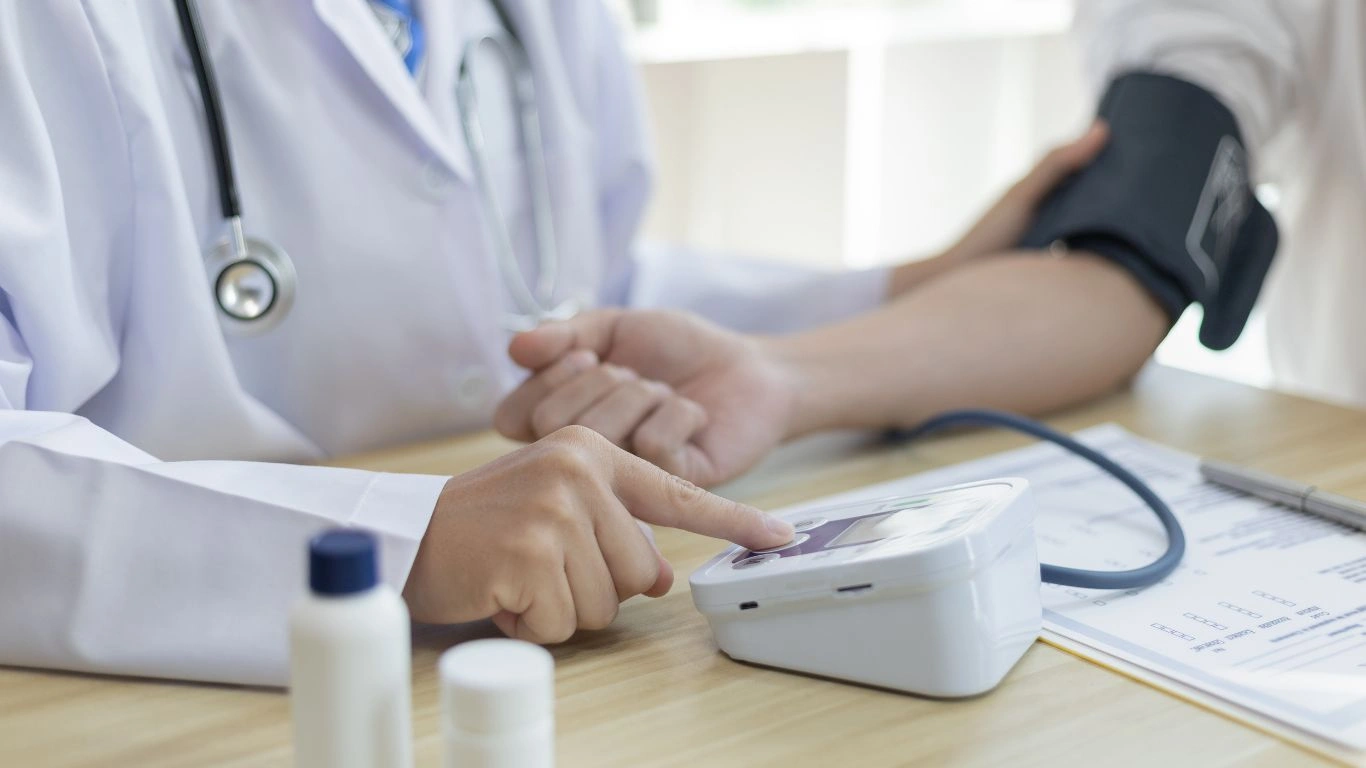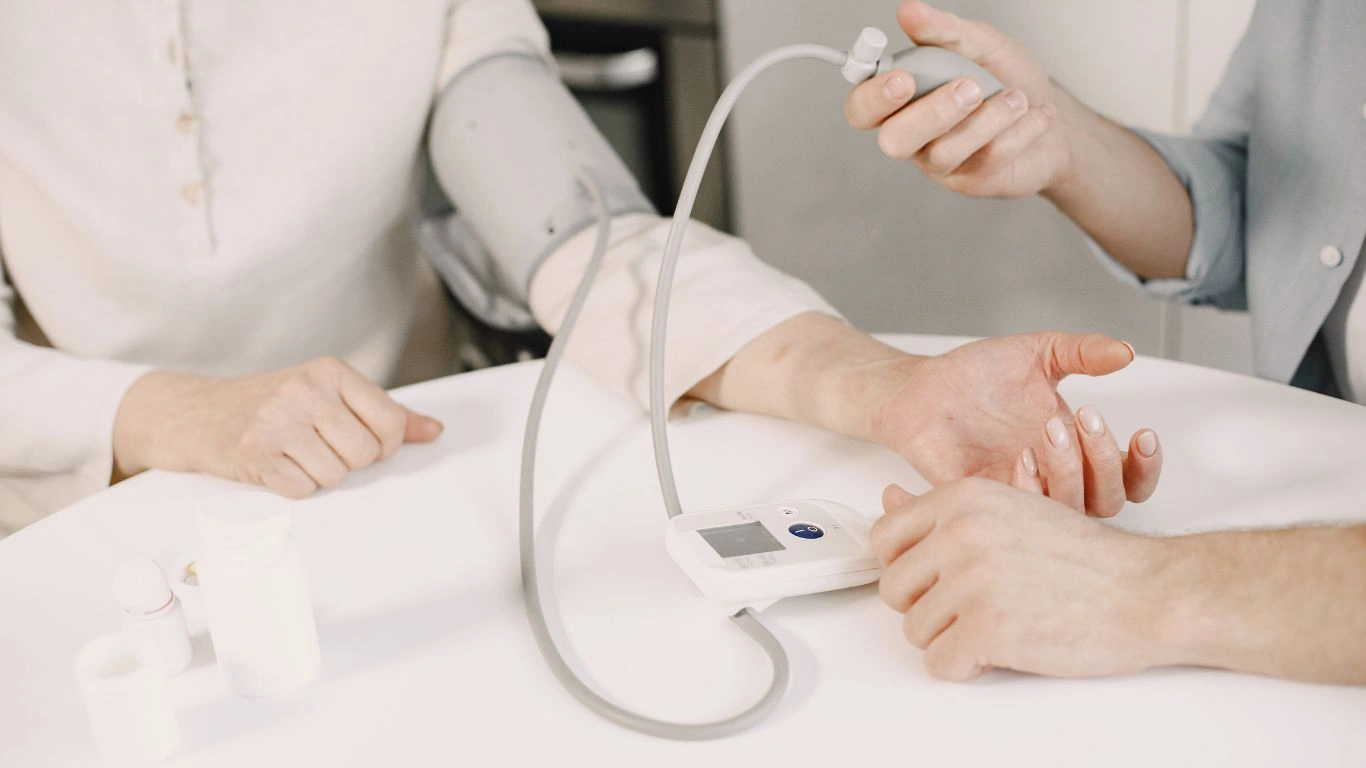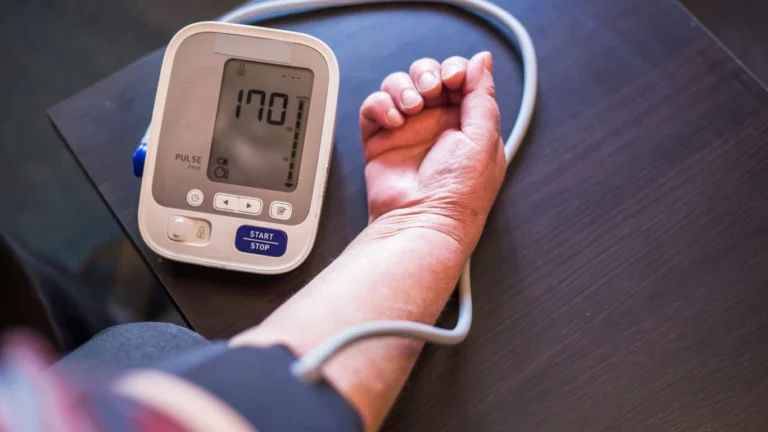How a Standing Desk Can Impact Your Blood Pressure for Better Health
As a physician specializing in hypertension management, I’ve seen firsthand how lifestyle changes can have a profound effect on blood pressure. One change that’s gaining traction lately is the adoption of standing desks. But how exactly does a standing desk impact blood pressure? If you’ve been wondering whether standing while working could lower your blood pressure or if it’s just another workplace trend, you’re in the right place. In this article, we’ll break down the science and share some practical tips for using a standing desk in a way that might just benefit your health.
The Science Behind Standing Desks and Blood Pressure
When you think about standing desks, you probably envision a more dynamic way of working. But it’s not just about avoiding the dreaded “sitting disease.” Standing desks could have a meaningful impact on your health, particularly your blood pressure. As a healthcare provider, I’m always interested in what has the potential to improve my patients’ long-term well-being. Standing more throughout the day has been shown to lower the risk of hypertension, or high blood pressure, by improving circulation and encouraging movement. While it’s not a magical cure, standing more often can certainly help maintain a healthier cardiovascular system.

What Happens to Your Blood Pressure When You Sit for Too Long?
Before we dive deeper into how a standing desk might help, it’s essential to understand the consequences of sitting for long periods. In my clinical practice, I’ve seen patients with high blood pressure who spend most of their day seated, whether it’s at a desk, in front of a computer, or in meetings. Sitting for extended periods is linked to increased levels of vascular resistance, which contributes to the rise in blood pressure.
When you sit, your muscles are relatively inactive, and your blood flow slows down. This can lead to poor circulation and higher blood pressure over time. In fact, research has shown that sedentary behavior can lead to an increase in both systolic and diastolic blood pressure. If you’re someone who works long hours at a desk, this might be an important consideration when evaluating your lifestyle.
Standing Desks and Their Role in Lowering Blood Pressure
Now, let’s talk about why standing desks can be such a game-changer for blood pressure management. While standing doesn’t seem like it would be much different from sitting, the simple act of being upright offers a variety of benefits.
Improved Circulation
One of the most immediate benefits of standing is improved circulation. When you stand, your muscles engage and your heart has to pump blood more efficiently. This increased circulation helps reduce the pressure on your arteries and keeps your blood flowing freely. For people with high blood pressure, better circulation can help lower both systolic and diastolic pressures.
Encouraging Movement and Flexibility
Standing also promotes movement. Unlike sitting, where you’re often sedentary, standing encourages you to move around more. Whether it’s taking a brief walk or even shifting your weight from one foot to the other, those small actions can help reduce stress on your cardiovascular system. From my own experience in treating patients, I’ve found that regular movement (even something as simple as standing up every 30 minutes) can significantly contribute to better long-term blood pressure control.

Reducing Stress
Stress is one of the key contributors to high blood pressure. As a doctor, I’ve often advised patients to incorporate relaxation techniques into their daily routine to help manage hypertension. Interestingly, using a standing desk may have a stress-reducing effect as well. While it’s not a direct replacement for meditation or deep breathing exercises, standing desks can reduce mental fatigue and discomfort associated with prolonged sitting. This subtle but effective change in posture can be just what you need to feel more energized and less stressed during the workday.
How to Integrate a Standing Desk Into Your Work Routine
So, now that we know standing desks can be beneficial, how can you incorporate one into your work routine effectively? Here are some practical tips based on what I’ve observed in my own clinical practice and the advice I often give patients.
Start Slowly
It’s tempting to think you can switch from sitting all day to standing for hours at a time, but that’s not a practical approach for most people. Just like any new habit, it’s important to start slowly. Begin by standing for 20-30 minutes every hour and gradually increase the time as your body gets used to the new routine. This slow progression will give your muscles time to adjust and help prevent fatigue or strain.
Use an Anti-Fatigue Mat
Standing for long periods can be tiring, especially if you’re standing on hard surfaces. I always recommend using an anti-fatigue mat to cushion your feet and reduce the pressure on your lower body. This simple addition can make a huge difference in how comfortable you feel during your standing periods.
Maintain Good Posture
Standing at your desk might seem straightforward, but many people make the mistake of slouching or leaning forward, which can strain your back and neck. Focus on maintaining good posture: keep your shoulders relaxed, your back straight, and your head aligned with your spine. If you feel any discomfort, it might be time to adjust your desk or your posture.

Conclusion: The Potential Benefits for Hypertension
While using a standing desk alone may not be the ultimate solution to managing blood pressure, it’s certainly a positive step in the right direction. For people dealing with hypertension, incorporating a standing desk into your daily routine can contribute to improved circulation, reduced stress, and better overall cardiovascular health. In my clinical experience, patients who combine standing with other healthy habits, like regular exercise and a balanced diet, tend to experience better blood pressure management.
Why Standing Desks Might Be the Key to a Healthier Workday
As we dive deeper into the benefits of standing desks, it’s important to highlight how they can play a role in making your overall workday healthier. Let’s be real—many of us spend more time at our desks than we’d like to admit. Whether it’s a 9-to-5 job, long meetings, or late-night deadlines, the hours spent sitting can add up fast. And that’s not great news for your health, especially when it comes to blood pressure. I’ve seen firsthand how small changes, like standing more during the day, can really move the needle when it comes to managing hypertension.

Standing Desks and Their Impact on Stress Management
Let’s talk about stress for a minute. As an internal medicine physician, I know stress is often a hidden contributor to high blood pressure. In fact, many of my patients don’t even realize how much stress is affecting their health until we dive into their daily routines. When you’re sitting all day, it’s easy for tension to build up in your muscles and even in your mind. Being in a sedentary position can exacerbate feelings of frustration, fatigue, and discomfort, all of which can contribute to stress and, in turn, higher blood pressure.
One of the key benefits of using a standing desk is that it can help alleviate some of that stress. The simple act of standing helps break the cycle of tension and stagnation. When you stand, your body can engage in small movements—stretching, shifting weight, or even just standing tall—which can release built-up stress and reduce the overall strain on your body. Plus, standing more often means you’re less likely to fall into the trap of slouching or stiffening up. This has a direct impact on reducing the physical manifestations of stress, like tight muscles, headaches, and increased blood pressure.
Improved Energy Levels Throughout the Day
We’ve all had those days when we feel sluggish by mid-afternoon. You know the kind—when the coffee wears off, and you’re fighting to stay awake. But here’s something I’ve noticed with patients who use standing desks regularly: they often report feeling more energized. It’s not just about the physical act of standing, either. Standing helps stimulate circulation, keeping your body more alert and less prone to that “afternoon slump.” This boost in energy can make a world of difference when you’re trying to stay productive, focused, and in a good mood, especially if you’re someone who struggles with high blood pressure.
The Mental Health Benefits of Using a Standing Desk
Another often-overlooked benefit of standing desks is their potential to improve mental well-being. In the fast-paced world we live in, mental health can take a backseat, especially when you’re spending hours on end at your desk. The mental toll of chronic stress and fatigue can build up over time, leading to mood swings, burnout, and even depression—all of which can worsen blood pressure. Fortunately, standing more during the day can help mitigate some of these mental health challenges.

Enhanced Mood and Reduced Fatigue
Incorporating standing periods into your routine can have a positive impact on your mood. In my experience, standing desks can help lower fatigue and boost mood by improving circulation and encouraging a more dynamic work environment. Studies show that people who use standing desks tend to feel less tired and less stressed. This is because standing helps activate your body’s natural “feel-good” hormones, like endorphins, which can reduce the feelings of exhaustion and irritability often associated with sitting for long hours.
One thing I’ve noticed from my patients is that when they start using standing desks, they tend to report fewer “brain fog” moments. When your body is engaged in small movements throughout the day, it helps keep your mind sharp, reducing the sluggishness that comes with prolonged sitting. As a result, your productivity improves, and you’re able to tackle tasks with more energy and focus. This is especially important for anyone dealing with hypertension, as mental clarity can help you make better lifestyle choices that support heart health.
How Much Standing Is Ideal for Blood Pressure Management?
While standing desks are a fantastic tool, you may be wondering, “How much standing should I be doing to see improvements in my blood pressure?” It’s a great question, and there’s no one-size-fits-all answer. However, based on my clinical experience and existing research, here are some guidelines to get the most out of your standing desk:
Start with a 1:1 Ratio of Sitting to Standing
If you’re new to standing desks, start with a 1:1 ratio of sitting to standing. For example, stand for 30 minutes, then sit for 30 minutes. Gradually increase your standing time as you get more comfortable. This balance allows your body to adjust without feeling overexerted, and it helps prevent the discomfort that comes from standing for too long at a stretch. As your body adapts, you can begin to stand for longer periods, moving toward a 2:1 ratio (two hours of standing for every one hour of sitting).
Incorporate Movement with Standing
Standing alone is beneficial, but to truly maximize the benefits for your blood pressure, you’ll want to incorporate movement. You don’t need to do anything intense—simple movements like shifting your weight, walking in place, or even doing a few gentle stretches can help keep your blood flowing and your heart rate steady. I always tell my patients to aim for a “move every hour” mentality—whether it’s standing up for a quick stretch or taking a short walk around the office or home. The idea is to stay active and break up any sedentary periods throughout the day.

Listen to Your Body
One of the most important pieces of advice I give is to listen to your body. If you’re standing and begin to feel fatigued, dizzy, or uncomfortable, don’t push yourself too hard. It’s all about balance. If you’re used to sitting for long periods, you’ll need to ease into it gradually. Standing desks are meant to be a tool to help you feel better, not a cause of additional discomfort. Pay attention to how your body reacts, and adjust your standing time as needed.
Combining Standing Desks with Other Healthy Habits for Maximum Blood Pressure Benefits
Now that we’ve covered how standing desks can help manage your blood pressure, let’s talk about how you can maximize these benefits by pairing them with other lifestyle changes. As an internal medicine physician, I always tell my patients that there is no one-size-fits-all solution. Hypertension is a complex condition that requires a multi-faceted approach. Standing desks are a fantastic starting point, but the best results come when they’re combined with other heart-healthy habits.

Pairing Your Standing Desk with Regular Exercise
While standing more during the day is beneficial, regular physical activity is a crucial piece of the puzzle. You don’t have to be a marathon runner or spend hours in the gym to reap the cardiovascular benefits. Incorporating moderate exercises into your routine can help lower your blood pressure, improve circulation, and increase overall health.
In my clinical practice, I’ve often seen patients who feel discouraged about exercise because they think they need to commit to an hour at the gym every day. But the reality is, even small changes can make a big difference. Aim for at least 150 minutes of moderate aerobic activity per week, whether that’s brisk walking, swimming, or cycling. You don’t have to do it all at once—break it up into smaller sessions if needed. And if you’re already using a standing desk, adding light movement—like a walk during your lunch break—can make a significant impact on your blood pressure levels.
Diet and Hypertension Management
If you want to manage your blood pressure effectively, your diet plays a crucial role. I always emphasize the importance of a heart-healthy diet to my patients with hypertension. Eating foods that are rich in potassium, magnesium, and fiber while limiting sodium can significantly help lower blood pressure. Think leafy greens, whole grains, lean proteins, and healthy fats.
One of the most common dietary patterns I recommend is the DASH Diet (Dietary Approaches to Stop Hypertension). This eating plan is specifically designed to help lower blood pressure and is packed with nutrients that support cardiovascular health. For example, foods like spinach, bananas, and sweet potatoes are great sources of potassium, which helps balance out the effects of sodium in your body. I’ve seen amazing results when patients combine diet changes with standing desks. It’s all about creating a holistic approach to managing hypertension.
The Power of Mindfulness and Stress Reduction Techniques
As I mentioned earlier, stress is a significant contributor to high blood pressure. And let’s face it—life is stressful! Work pressures, personal commitments, and health challenges can easily lead to elevated stress levels. But managing stress doesn’t have to be as daunting as it sounds.
Incorporating mindfulness and relaxation techniques, such as deep breathing exercises, yoga, or meditation, can significantly lower your stress levels and, in turn, help manage your blood pressure. I often recommend that my patients take a few minutes throughout the day for deep breathing, especially when they feel overwhelmed. Standing desks are an excellent opportunity to incorporate mindful movements as well. For example, while you’re standing, try focusing on your breath and engaging in gentle stretching. These small moments of mindfulness throughout the day can go a long way in reducing overall stress.
Technology’s Role in Blood Pressure Monitoring
Now, if you’re serious about managing your blood pressure, one of the best things you can do is monitor it regularly. The good news is, with today’s technology, tracking your blood pressure has never been easier. There are numerous apps and devices available that sync with your smartphone to provide real-time blood pressure readings, allowing you to stay on top of your health from the comfort of your own home.
In my practice, I often recommend patients invest in a reliable at-home blood pressure monitor. Keeping track of your readings can help you see how small changes, like incorporating a standing desk, impact your blood pressure over time. You’ll be able to detect trends—whether positive or negative—and adjust your approach accordingly. Tracking your blood pressure also empowers you to have more meaningful conversations with your healthcare provider about your hypertension management plan.

Apps to Help Track Your Progress
There are a number of apps that can help you track your blood pressure and other health metrics. Some of the most popular ones include MyBloodPressure, Heart Habit, and Blood Pressure Companion. These apps allow you to input your readings manually or sync with your home blood pressure monitor. Additionally, many of these apps offer tips, insights, and reminders, which can keep you motivated and on track with your blood pressure goals.
Incorporating these tracking tools alongside your standing desk can give you a full-picture view of how changes in your daily routine are impacting your overall health. I’ve seen patients experience significant improvements in their blood pressure just by being more aware of their habits and taking action early.
Disclaimer
The information provided in this article is for general informational purposes only and should not be considered medical advice. Always consult with your healthcare provider before making any significant changes to your lifestyle, especially if you have a medical condition like hypertension. The use of standing desks, dietary changes, and other health-related suggestions mentioned in this article should be considered in the context of your overall health and individual needs. Every individual’s medical needs are different, and what works for one person may not work for another.
References

Dr. Gwenna Aazee is a board-certified Internal Medicine Physician with a special focus on hypertension management, chronic disease prevention, and patient education. With years of experience in both clinical practice and medical writing, she’s passionate about turning evidence-based medicine into accessible, actionable advice. Through her work at Healthusias.com, Dr. Aazee empowers readers to take charge of their health with confidence and clarity. Off the clock, she enjoys deep dives into nutrition research, long walks with her rescue pup, and simplifying medical jargon one article at a time.





